The wild story behind the making of Caddyshack, 40 years on
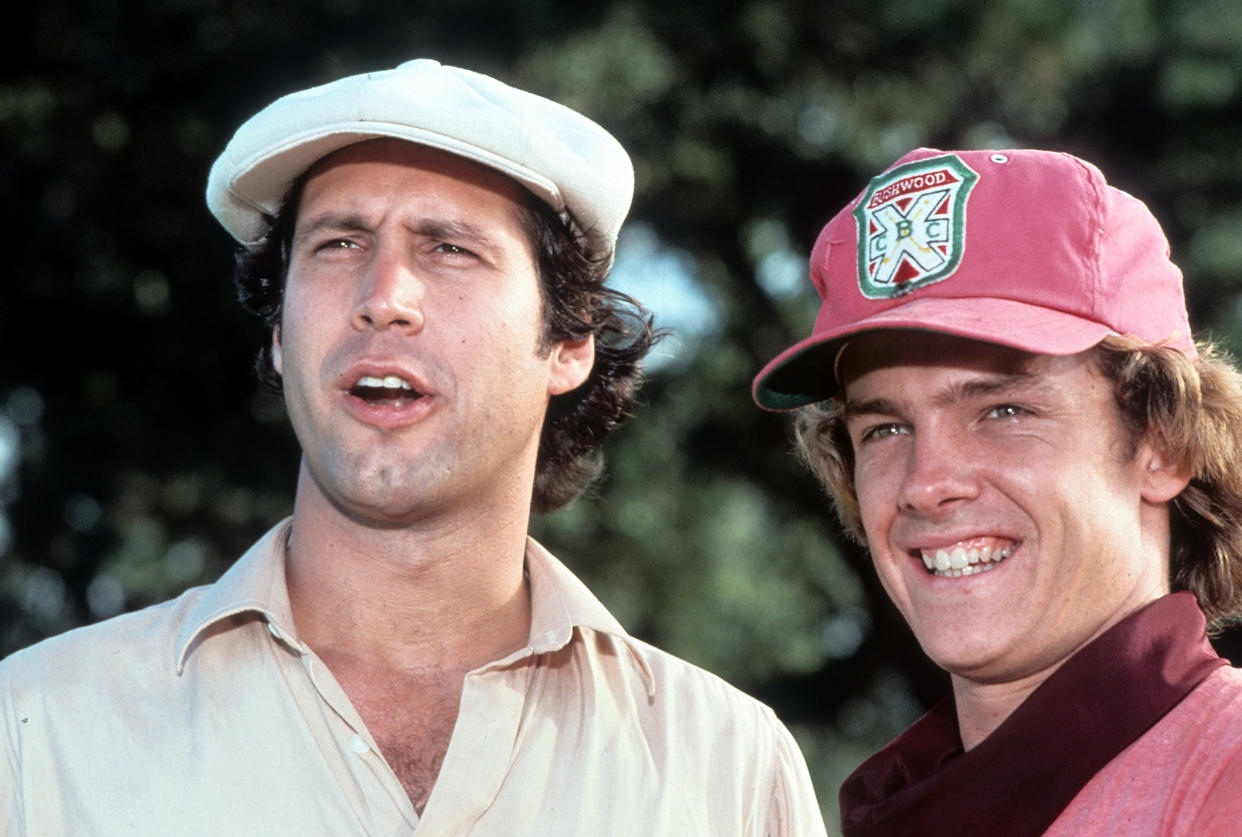
Caddyshack is a golf flick that teed off in unremarkable fashion some 40 years ago, disappointing critics and underwhelming at the box office. But the film found its form on the back nine, and is now considered one of the most beloved comedies of all-time.
Following the unprecedented success of National Lampoon’s Animal House, writers Harold Ramis and Doug Kenney decided to tell a similar story on the links, pitting teenage caddies against the rich golfers whose bags they had to carry. Teaming up with actor and comedian Brian Doyle-Murray, they wrote a coming-of-age tale about a kid called Danny Noonan, cast rising star Michael O’Keefe in the role, then surrounded him with a bunch of comedy heavyweights.
Former Saturday Night Live star Chevy Chase played zen golf master Ty Webb, current Saturday Night Live star Bill Murray became deranged groundskeeper Carl Spackler, and stand-up legend Rodney Dangerfield was cast as Al Czerik, a wisecracking land developer with plans for the golf club in question.
Read more: Most scandalous film sets in history
But as soon as that comedy triumvirate arrived on set the script started to change, and with drink and drugs consumed at every available opportunity, the shoot spiralled out of control. Director Ramis managed to pull those disparate elements together and finish the film, but it wasn’t the Animals House-style smash everyone was expecting.
Caddyshack’s popularity and reputation have grown ever since however, and it’s now considered a bona fide comedy classic. With the film celebrating its 40th birthday this week, we caught up with Danny Noonan himself – Michael O’Keefe – to discuss making a movie where what happened behind-the-scenes was more shocking than anything that ended up onscreen.
Yahoo Movies UK: How did you land the role of Danny Noonan?
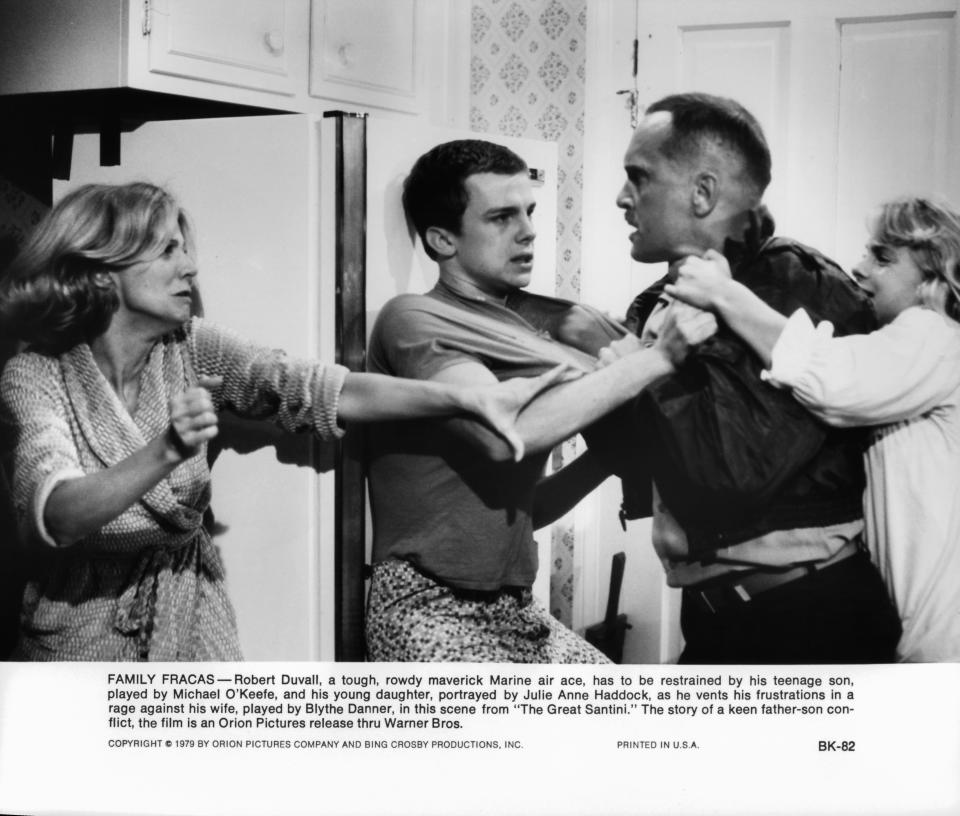
Michael O’Keefe: I had to do a few auditions. The first audition was with Harold Ramis, who directed the movie, and the second one was with Harold and Brian Doyle-Murray and Doug Kenney, who wrote it. Of course, being an actor I lied and told them I was an avid golfer, which was not true. I did caddy when I was young. We grew up in Westchester County and I caddied at the Winged Foot Golf Course when I was in High School. So I knew how to club people and walk a course and all the little details of caddying that came in handy. I had really not played much as a kid, but I wanted the part and they were pretty eager to give it to me. At the time I’d done The Great Santini with Robert Duvall through the same studio so they had already seen that I knew what I was doing and liked having me around.
Is it true that there was another big actor up for the part?
This might be apocryphal but I love this – the story got around that it came down to two actors, and it was me and Mickey Rourke. I’ve always loved that story because of the idea of Mickey Rourke being Danny Noonan and Judge Smails implying that he’d have to suck up to him and Rourke saying [effects Mickey Rourke accent] ‘Hey Judge Smails – go f*** yourself – shove your f***ing caddy scholarship up your ass.’
How quickly did you have to learn golf?
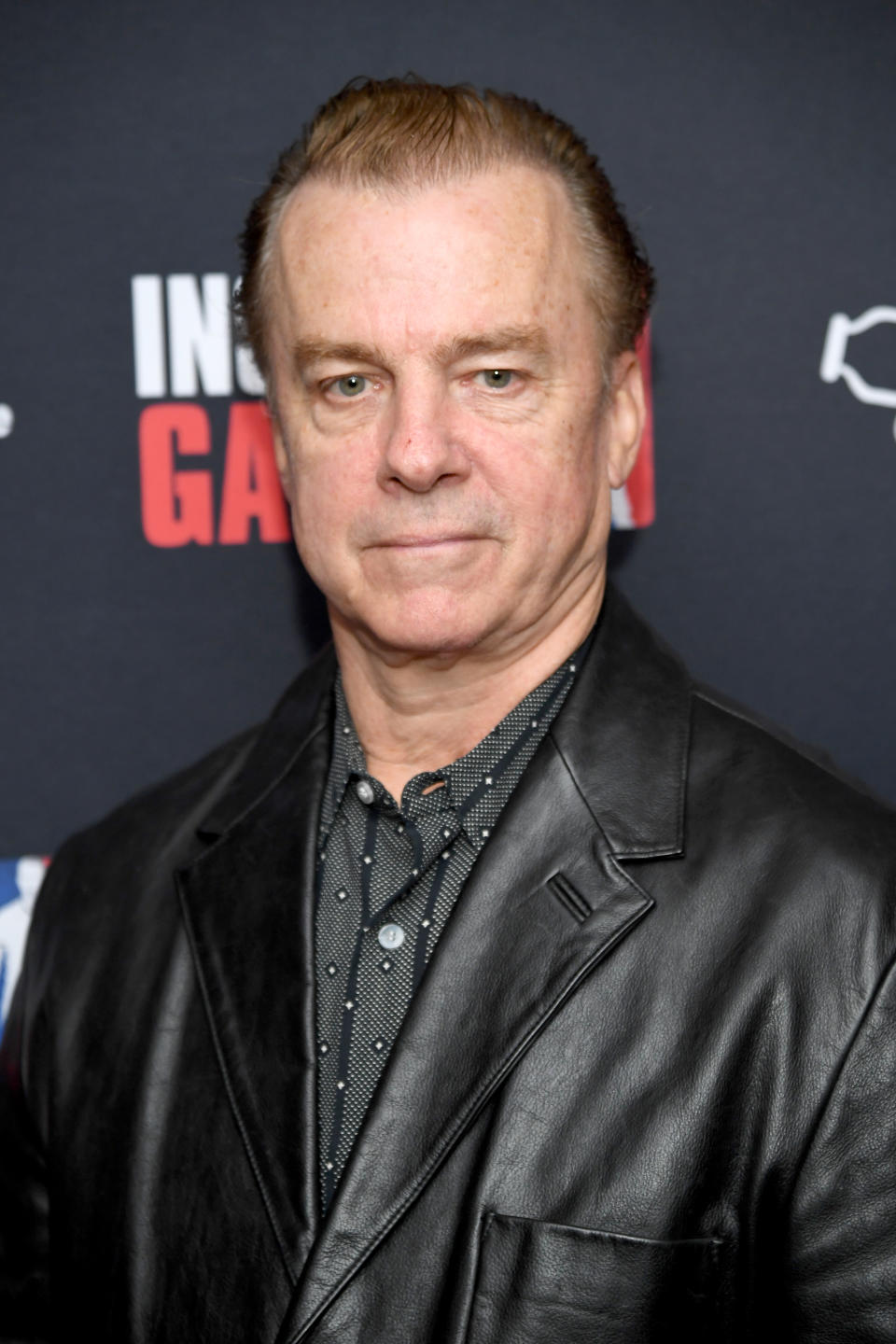
When it all fell into place, I realised about 10 minutes after I got the offer that I’d really have to learn, or this was all going to fall apart. I was back in New York, so I made a deal with the pro at the Winged Foot Golf Club to be my teacher – a guy named Tom Nieporte – who was a PGA Tour pro and had won on the tour, and an assistant teaching pro named Dave Schultz, and Tom’s son Joe, who is more-or-less my age, who was a really good golfer.
I just spent every day with them for six weeks. And I ended up with a reasonably decent golf swing. I convinced a movie audience that I knew what I was doing, though I’m not sure how many golf pros thought I had a good swing.
What was it like working on that set?
The first memorable thing was Rodney. My father was a huge Rodney Dangerfield fan so I had seen him on TV a number of times growing up. We were just getting started and Rodney’s already in character – well he’s always in character – but he’s dressed and wearing wardrobe. At the time I had irregular teeth – I’ve since had them fixed – so I smiled and Rodney said [effects Rodney Dangerfield accent] ‘Ooh kid – your teeth! You should let me set you up with my nephew, he’s a dentist.’ So I thanked him for that, then he said ‘Florida eh? It’s like a sauna with gnats!’
Did you enjoy acting opposite him?
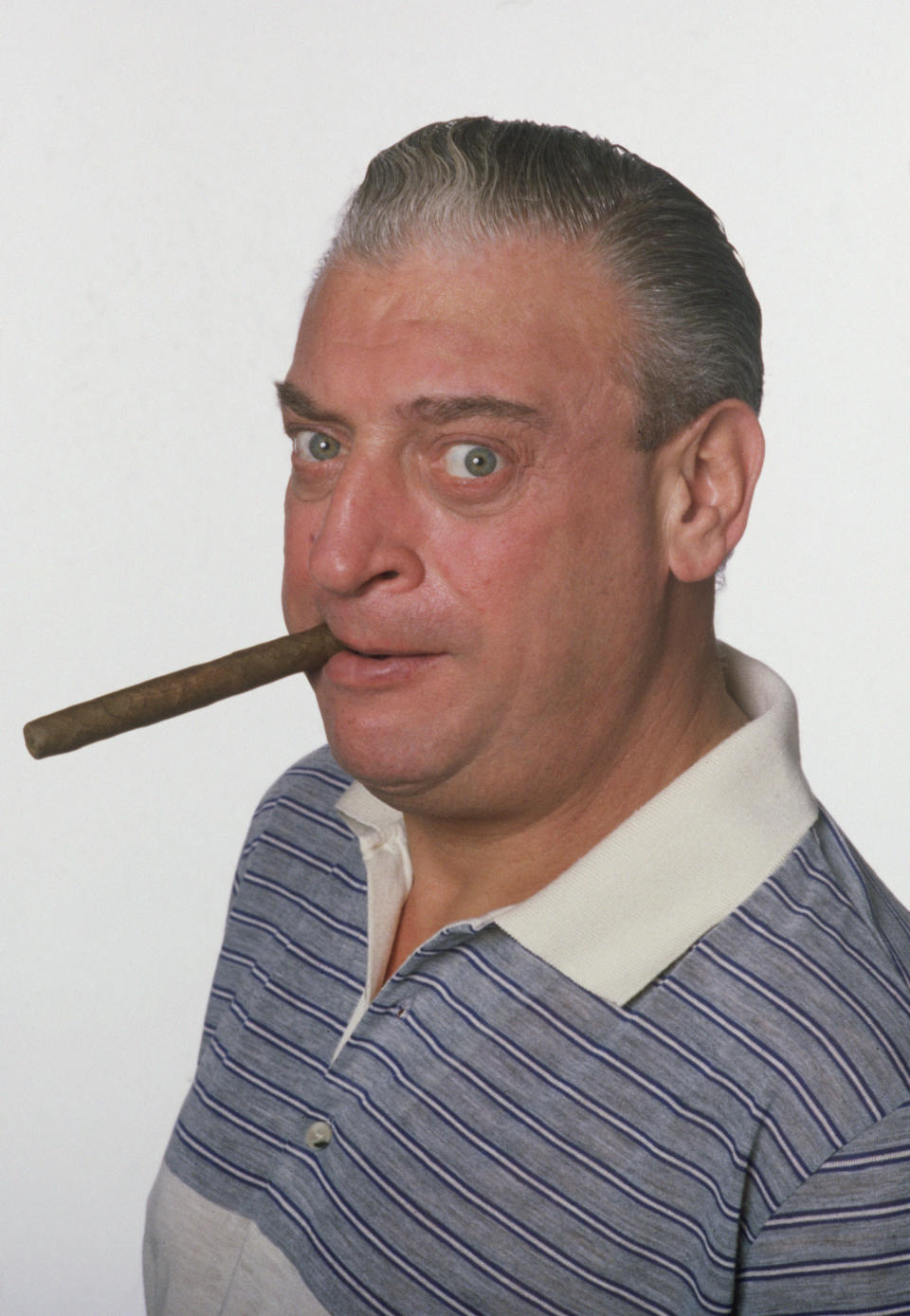
Rodney was hilarious. On his first day, he goes into the pro shop and he’s throwing around money and he’s got Wang with him and he sees the hat. Well he didn’t really come in the entrance of the store; he came in from a receded wall that looked like he could be coming from a door, which just worked for the geography of the room. So he would stand behind there, and Harold said ‘Action!’ and nothing happened. ‘Action’ then nothing happened. And Harold finally said ‘Rodney’ and Rodney said ‘Yeah!’ ‘When I say action, that’s when you come in.’ ‘Oh, you want me to do the bit?’ ‘Yeah, do the bit.’ So he came out and did the bit. He was really that green in terms of what happens on a movie set. So watching him was hilarious.
With all those comedy legends on set, who were you most excited about meeting?
I’d known Chevy because of Lemmings, the National Lampoon show, which I saw when I was a Senior in High School. I think he had done Foul Play by then, and of course I was familiar with Saturday Night Live because we were all thoroughly enthralled by SNL back then. Bill I was aware of because of the show, but he had only made Meatballs and it had not come out yet. So the only way I knew Bill was that he was Chevy’s replacement.
Ted Knight I knew because I was a huge Mary Tyler Moore fan so he was always on my radar as well. The person I was most dazzled by and into when I got the movie was Doug Kenney. I don’t know if you’ve had a chance to catch the Netflix movie A Futile and Stupid Gesture; I don’t know if it’s the best movie I’ve ever seen, but they really got the zeitgeist right. I think Will Forte as Doug and Domhnall Gleeson as Henry Beard – I think they really hit the nail on the head in terms of that irreverent, fly-by-the-seat-of-your-pants comedy sensibility that those guys had.
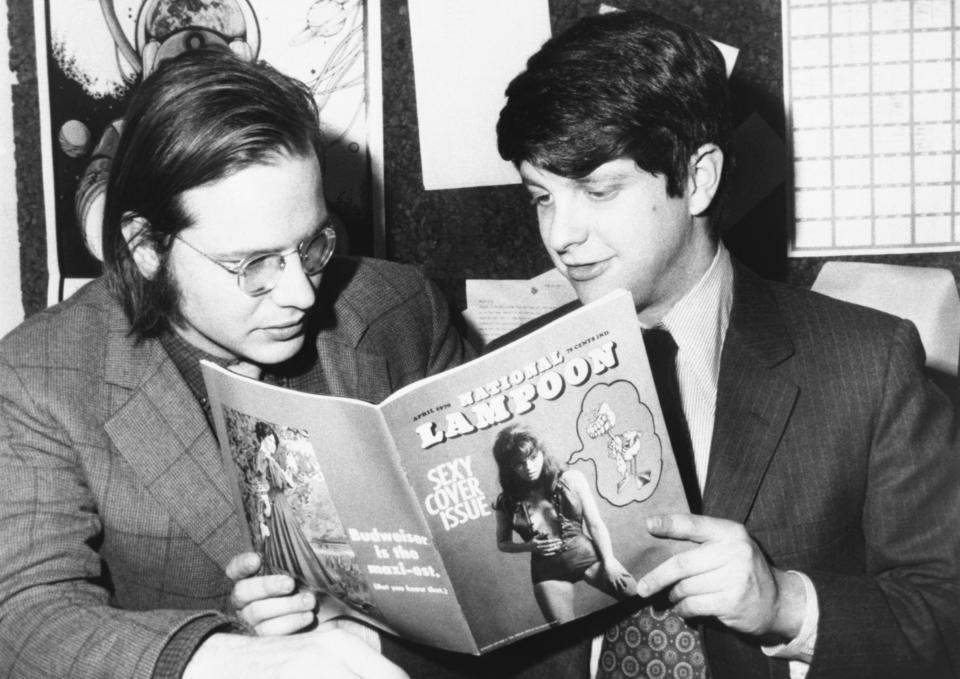
They had the vision and the balls to start National Lampoon magazine, but they also re-shaped modern comedy in terms of how we perceive it, and for my way of thinking, you could make a case for Doug Kenney to be as significant a figure in American comic film as Billy Wilder. He really was a genius, and I don’t toss that word around. He was one of these guys that was so affable and charming and inspired really fierce loyalty and devotion and love in his friends. I think that’s why when he got strung out and killed himself, it was so heartbreaking for so many people; they were shocked by it.
We had all fallen prey, back in that era in the 1970s, to that myth that in order to be a really creative person you had to go out there on the drug ledge, if you know what I mean. Hunter S. Thompson was blazing a trail that everyone grabbed onto, and Doug was certainly victim to that. But of course he wasn’t the only one. We all got caught up in it one way or the other. He became a real serious casualty of it. But in a way, I was most dazzled by him.
The shoot is notorious for the amount of drink and drugs that were consumed - how bad did it get?
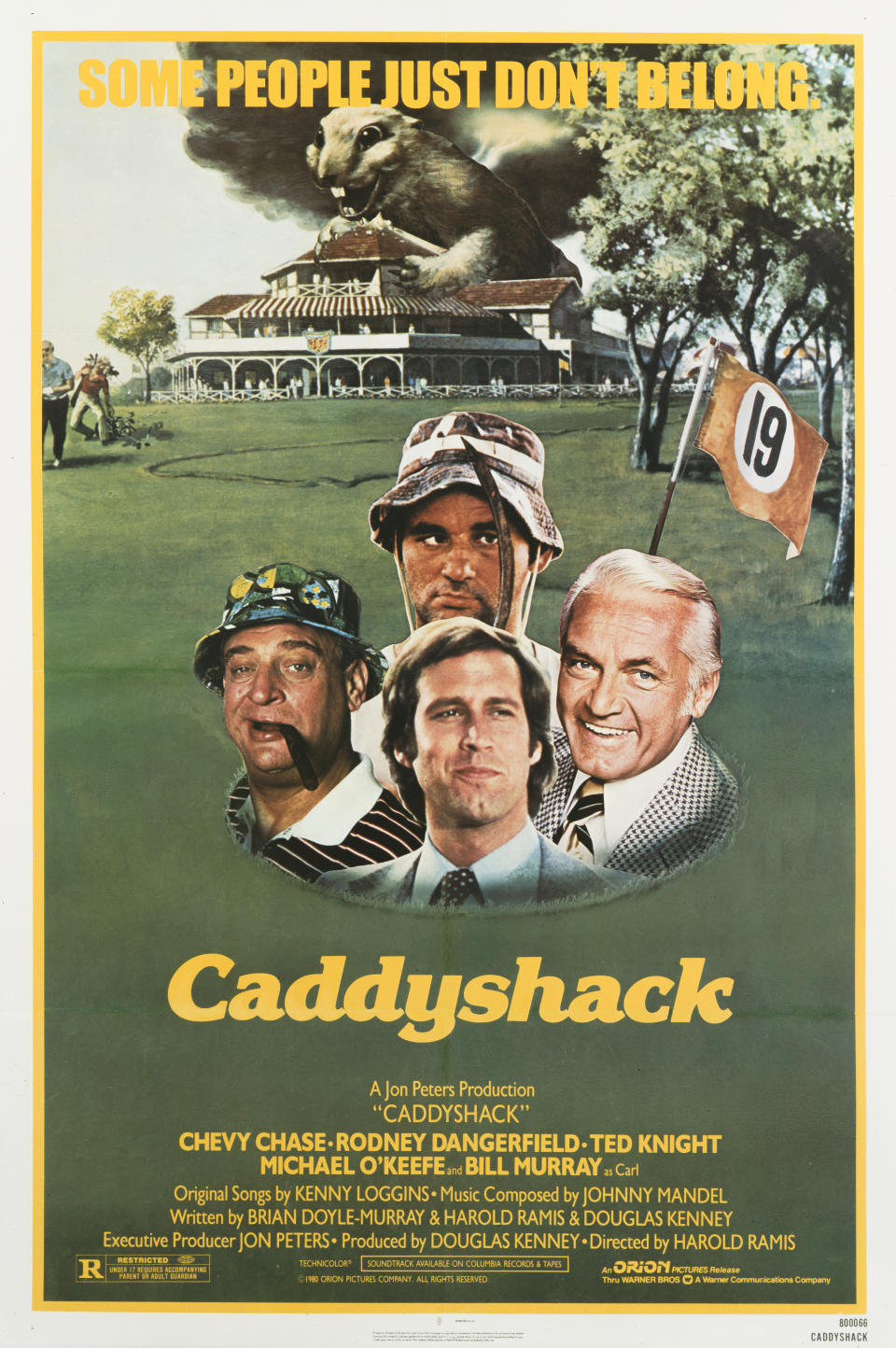
Since Doug and Harold are both dead, I can tell you that they would come into your trailer at lunch and offer you cocaine. For a producer or director to do that now would be such a red flag and such a death knell. The first response would be ‘So obviously you don’t ever want to work again’ if anybody ever said that to you on a set. But back then it was really kind of wild and woolly. That doesn’t mean that people didn’t focus and work hard.
You can’t make a movie without working your ass off; there’s just no way. And they really wanted it to be good. I think part of Doug’s dilemma and what led to his suicide was he didn’t really like the final film, because it wasn’t the film he wanted to make. It had a lot of zaniness, but it didn’t have a lot of heart. He wanted to tell an adult story. I think he saw himself more like Evelyn Waugh than WC Fields if you know what I mean. He had that more in mind. I don’t think an English Lit professor is going to bring out Caddyshack for a comparative study of Jeeves and Wooster – it’s just not going to happen. But it was crazy.
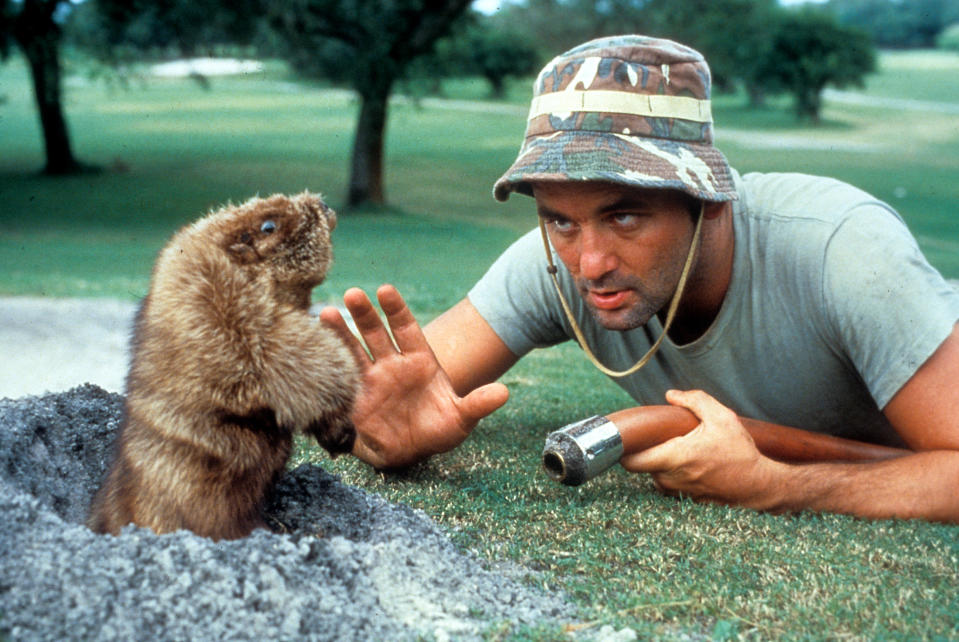
Bill was only there for eight or nine days, and we would all show up at seven or eight in the morning and Harold and Doug would be like ‘Where’s Bill?’ And it would have been because he had been out late partying and woke up in a trailer park 100 miles from the film location and they’d finally find him and bring him in and slap him together and get him out there and then it would work out.
But he had worked his ass off at Second City and trained assiduously and what they do appears so haphazard and crazy, but really, there is a method to their madness, and when you give them the right tools, they just take off, and that’s what happened.
Ted Knight was older than much of the cast so how did he respond to all that anarchy?
Ted was no fan of the craziness. He was much more of a sturdy 9-to-5 professional. He just wanted to show up and do a good job and be let out early and go have a good meal and enjoy the day. That kind of ‘fly-by-the-seat-of-your-pants’ thing, personally he was not very happy with. But you would never know that to watch him in the movie because he’s amazing in it.
Did that lead to tension on set?
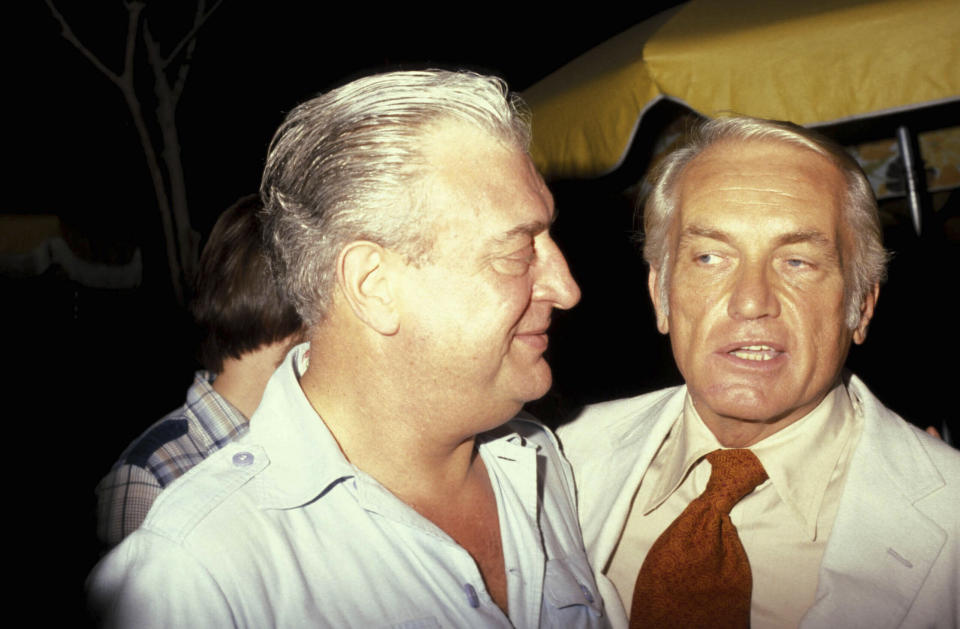
If there was tension it was because Ted was having to restrain himself because he was not happy. There was no arguing. There were moments where we struggled to figure out what we were going to do, but that was creative tension. Everybody wanted it to be good, and when everybody clicked, it clicked.
Who was going harder – the young caddies or the older cast members?
That’s kind of like saying who got drunker at prom – everybody got pretty drunk! I remember one time they did one of those ‘Making Of’ shows five or ten years ago and the interviewer asked if I remembered any one crazy party from Caddyshack. And I said ‘Are you asking me if there was any ONE party on Caddyshack? We partied EVERY day.’
They took over a motel that was on the golf course, which was where we were all housed. And that essentially turned into a college dorm. We had connecting rooms to people, so the party would start in somebody’s room, then it would float into the room next door, then it would float down to the bar for a while, then it would float back up to the rooms, then out onto the golf course, then we’d pile into a car and head somewhere, then everybody would sort of stagger awake at seven and pour gallons of coffee down their gullets and then find their way onto the set, which was across from the motel so it wasn’t that hard. And it just went on and on and on. It never stopped. So-much-so that the wrap party was a non-event because we were too exhausted.
Do you think there were more illicit substances consumed on the Caddyshack set than any other mainstream movie of that period?
It was like that on any movie that was made in ‘70s that had movie stars who were doing cocaine. I think we held our own if there was a competition. But that was the era. That was what people did. It was like going to a Taco Truck now. Cocaine was like ‘Let’s go to the Taco Truck for Taco Thursday.’
Who made you laugh the most on set?
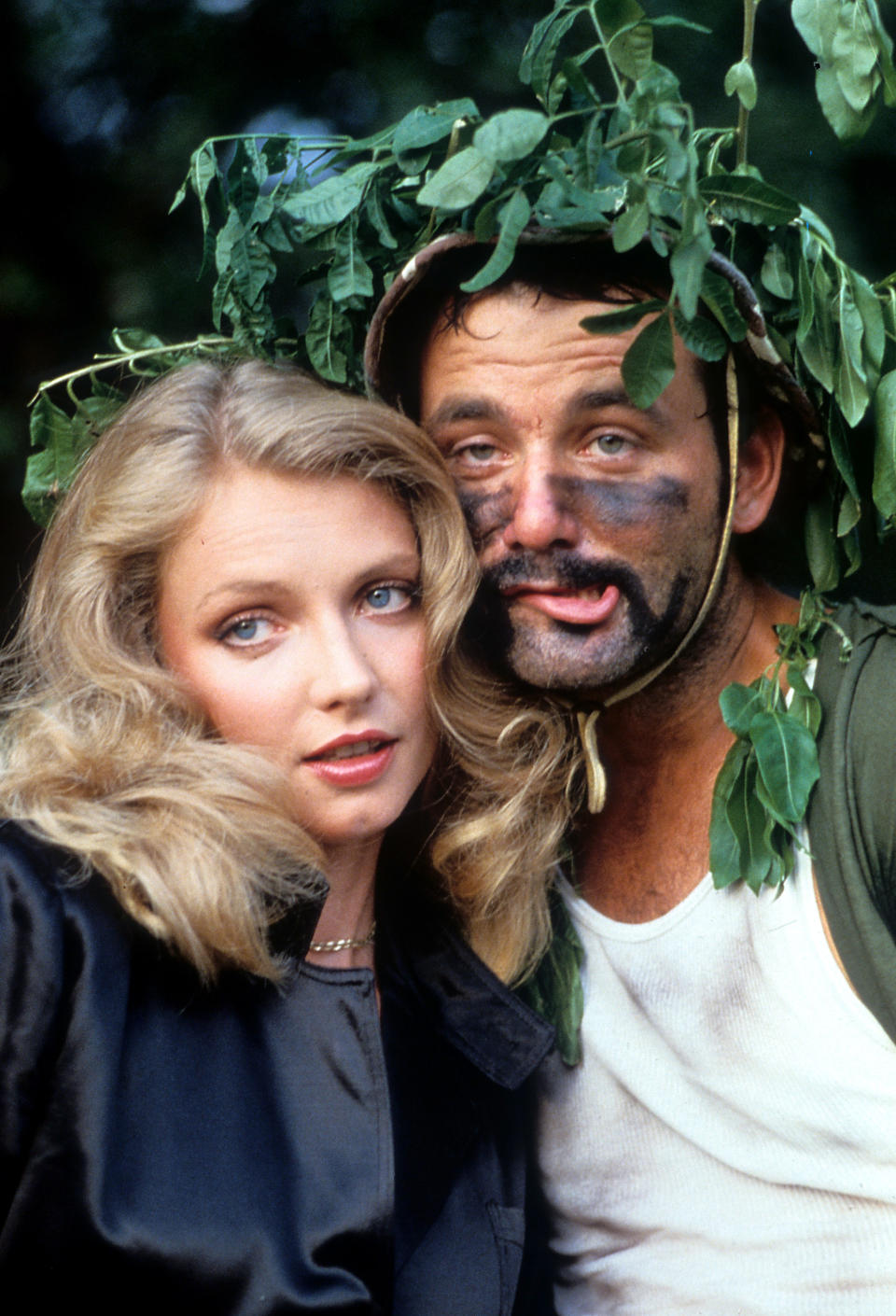
Chevy and I had the most to do together and he did crack me up. Bill did too. I watched him do the Dalai Lama speech. And I watched him do the thing where he hit the heads off those plants when he was winning the Masters as Carl Spackler. I was like ‘Damn’ because that was some impressive stuff. And he wrote all that on the fly right there.
When he did the ‘Young golfer winning The Masters’ it was as simple as Harold saying ‘You know when you’re playing basketball and you start doing the commentary and it’s the NBA Championships and there’s a minute left?’ And Bill said ‘Say no more.’ He went right out there, they turned on the camera, and he started [affects Bill Murray impression] ‘Young greenskeeper… Cinderella story, he’s at the Masters, he’s at the final hole.’ He just did it. I watched him do that and I watched him do the Dalai Lama speech, and it was mind-blowing.
When did you realise that the focus of the script was shifting away from you and onto the more established comedy stars?
After about a week Harold and Doug and Brian got together, and I think it was being driven by Harold because he was seeing what was happening on set where you’ve got Rodney and Ted and Bill and Chevy.
This is essentially like having the Marx Brothers. Of course they didn’t have a meeting where they were going to tell me that I’d become Zeppo Marx, because those guys got to become the four funny ones and I became the straight man; there was no meeting there. Doug really wrote a ‘Bildungsroman’ – a coming-of-age story. That’s what he really wrote. In a way it was more about himself – it was a solo journey, kind of waking up into what the world was, and those guys were ancillary. But Harold quickly realised that he should go with them. And to hang this story around Danny Noonan’s coming-of-age wasn’t going to offer as many comic opportunities.
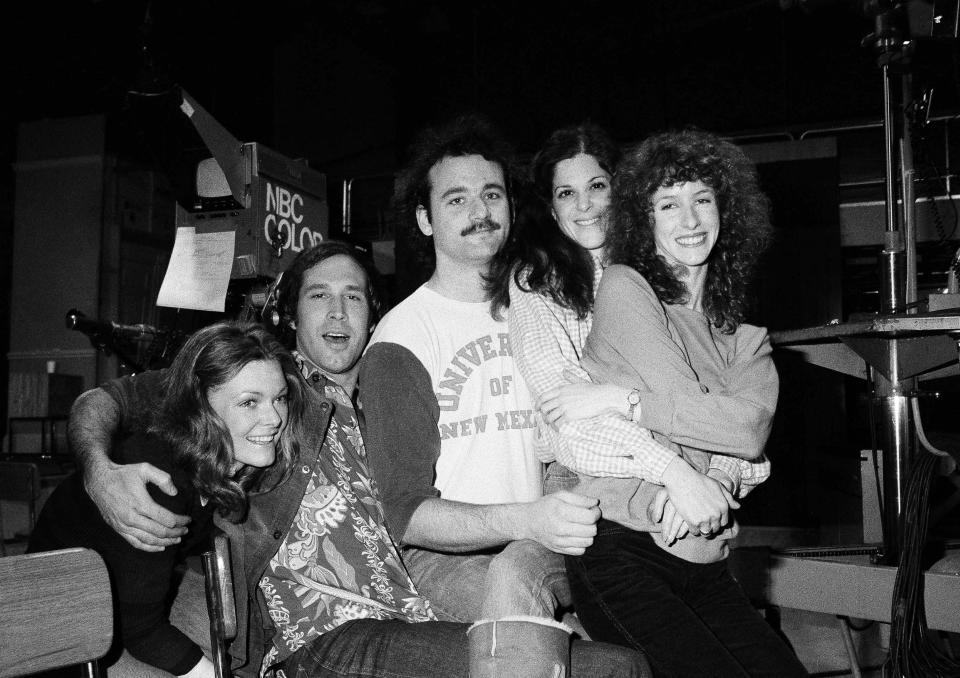
Frankly I’m glad he did because I would have risen to the occasion and done what I had to do with whatever my skillset was at the time was. But looking back on it now there’s no doubt in my mind that Bill Murray and Chevy Chase just operated in a different comedy league to me, and I was lucky to be on the same stage as them, as it were. The same is true for Ted and Rodney. I was a 25-year-old actor with a certain set of skills and certain chops and I get off a couple of decent lines in the movie. I did some improv that held up and stayed in the movie, and I’m happy about that, but those guys are different beasts than I am. They’re different creatures of creativity, and they’re just better at it than I am.
What was in that original script?
There was all sorts of stuff about Danny’s journey and his personal love life. His relationship with Maggie was much more complex. The thing with Lacey Underall was much more complicated. But when they tossed it out, that was the last time I looked at that, because I had to look at the stuff that we were going to do. There’s no story arc that’s stuck in my mind about what might have happened. Although now that I look back on it that might be a good performance art piece for me. Turn the original Caddyshack into a one-man show.
What did you think of the finished film when you first watched it?
I liked it. I LOVE the movie now, in a sense, because of what it’s become. But I didn’t think it was all that when I saw it. I thought it was funny. I thought they were funny. But I wasn’t surprised when it didn’t initially do well, and I wasn’t surprised when critics didn’t like it.
Comedies have a kind of ‘throw the spaghetti against the refrigerator and see what sticks’ aspect to them, in that you never know if they’re going to land or how they’re going to land or if they’re going to capture the zeitgeist. So my affection for the film more has to do with the place that it holds in people’s hearts. Not so much the fact that I think it’s great. But also I’m not my biggest fan, and I was doing things back that as an actor that nobody would see really, except me, but there are things that I do where I go ‘Woah – I really got away with that. I’m lucky I didn’t have a lot to do in that scene.’ Because I can just tell from my body language that I was a little uptight or a little confused or not sure where to focus my energy.
But having said that, I’m amazed. Caddyshack is the film that keeps giving. I get to do these little appearances every once in a while. People love the movie and they want to talk about it and that’s what I’m really connected to.
Why do you think the film’s popularity has grown in the intervening years?
I don’t know. I suppose if I really knew the answer to that question there would be a well-beaten path to my door of people asking me for filmmaking advice, but I can assure you that doesn’t happen. But I think Doug and Harold and Chevy and Bill especially, and Rodney and Ted knew how to grab on. There was something about the zeitgeist at the time that their insight and their sense of the American persona.
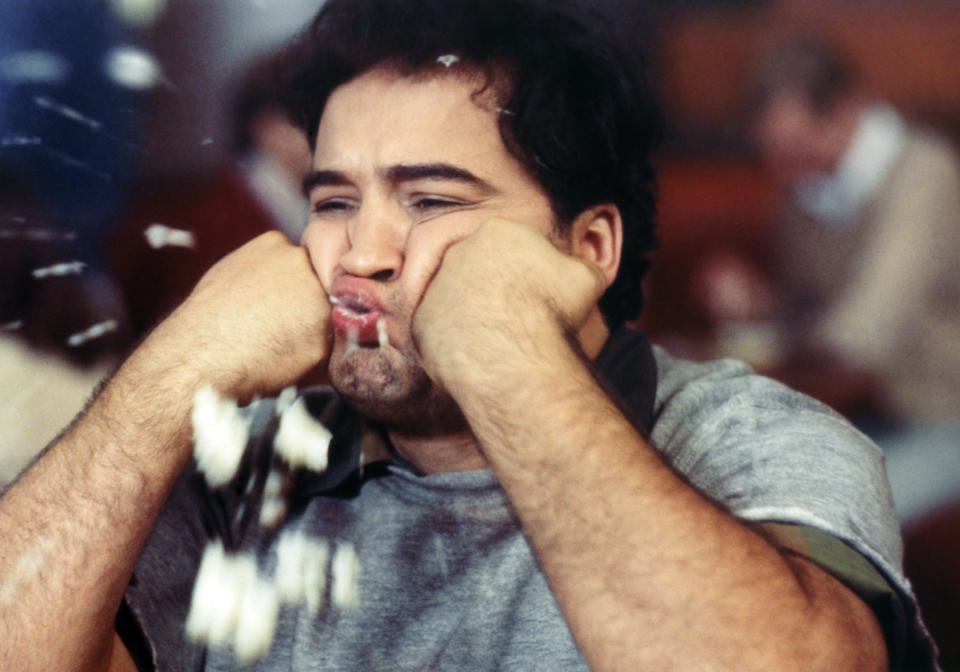
Animal House is evocative of a very similar trope. A literary trope of pitting an unlikely hero against the elite, who in the real world would have no problem crushing this unlikely hero. But because the unlikely hero has the support of some of the greatest writers of their generation, they get to outwit the elite, and I think that that’s gratifying for people.
Have you met professional golfers who are fans of the movie?
I played in a PGA Tour event a few years ago and I got to play with Sergio Garcia. A few years before that I got to play with Jack Nicklaus. I am an avid golf fan, so they are sporting heroes, and they LOVE the movie.
And when I went to some of those charity golf events, and people would come from all walks of showbusiness and sport, they all just wanted to talk about Caddyshack.
Finally, what does the movie mean to you, 40 years on?
About 12 years ago I did a pilot. There’s a great American writer-director called Mike Binder and we’ve been friends for years. So he put me in one of the male leads for a pilot he was making for 20th Century Fox and I went to the wardrobe fitting. The wardrobe designer – almost upon entering – said ‘Oh, I’m a huge Caddyshack fan.’ And as actors we’re often concerned with not being pigeon-holed.
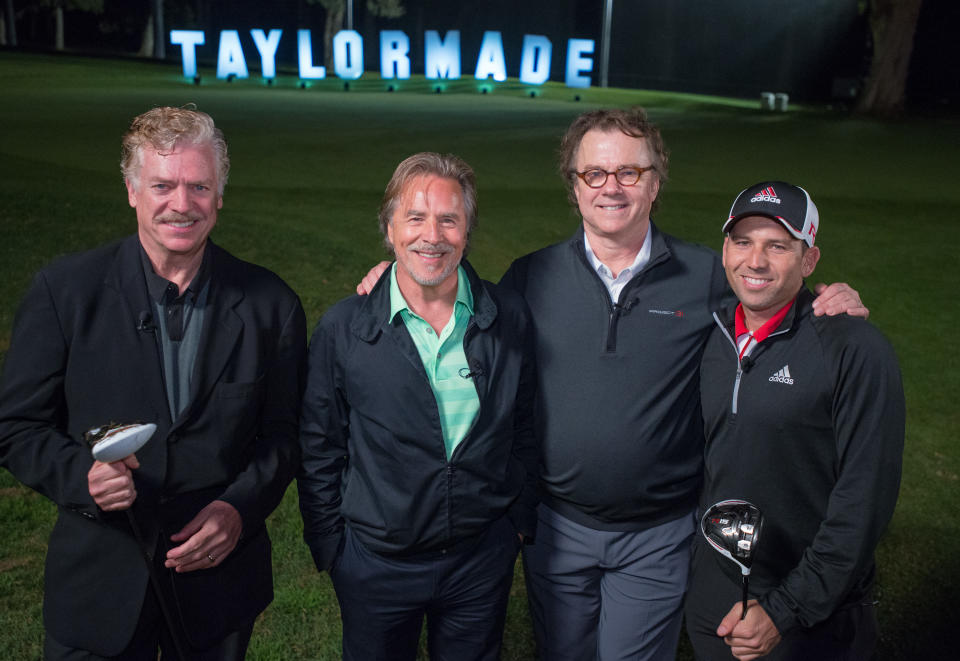
We want to be thought of as having body of work. We want to have a range of things that we do that people remember you for, and it’s obviously the self-referential way we hold ourselves as actors. And she read me quite clearly, when she said that I said ‘Thanks.’ Then we did the fitting. But I could tell something came up for her, and she said ‘Could I tell you something about why I told you I was a Caddyshack fan?’ And I said ‘Sure.’ And she said ‘My Dad just died, and the last six weeks that he was in the hospital dying of leukaemia, the only thing that relieved the tension for us as a family was we would sit in his hospital room and watch Caddyshack.’
And you could have knocked me over with a feather, because that totally shifted how I held the film personally and how the film is held in the culture and how people respond to the movie. In the end there’s something to be said for making people laugh. I’ve always enjoyed being connected to Caddyshack, but at that point, when she told me that story, that really changed my relationship to the film.
Caddyshack is available to buy or rent on PVOD.

 Yahoo Movies
Yahoo Movies 
